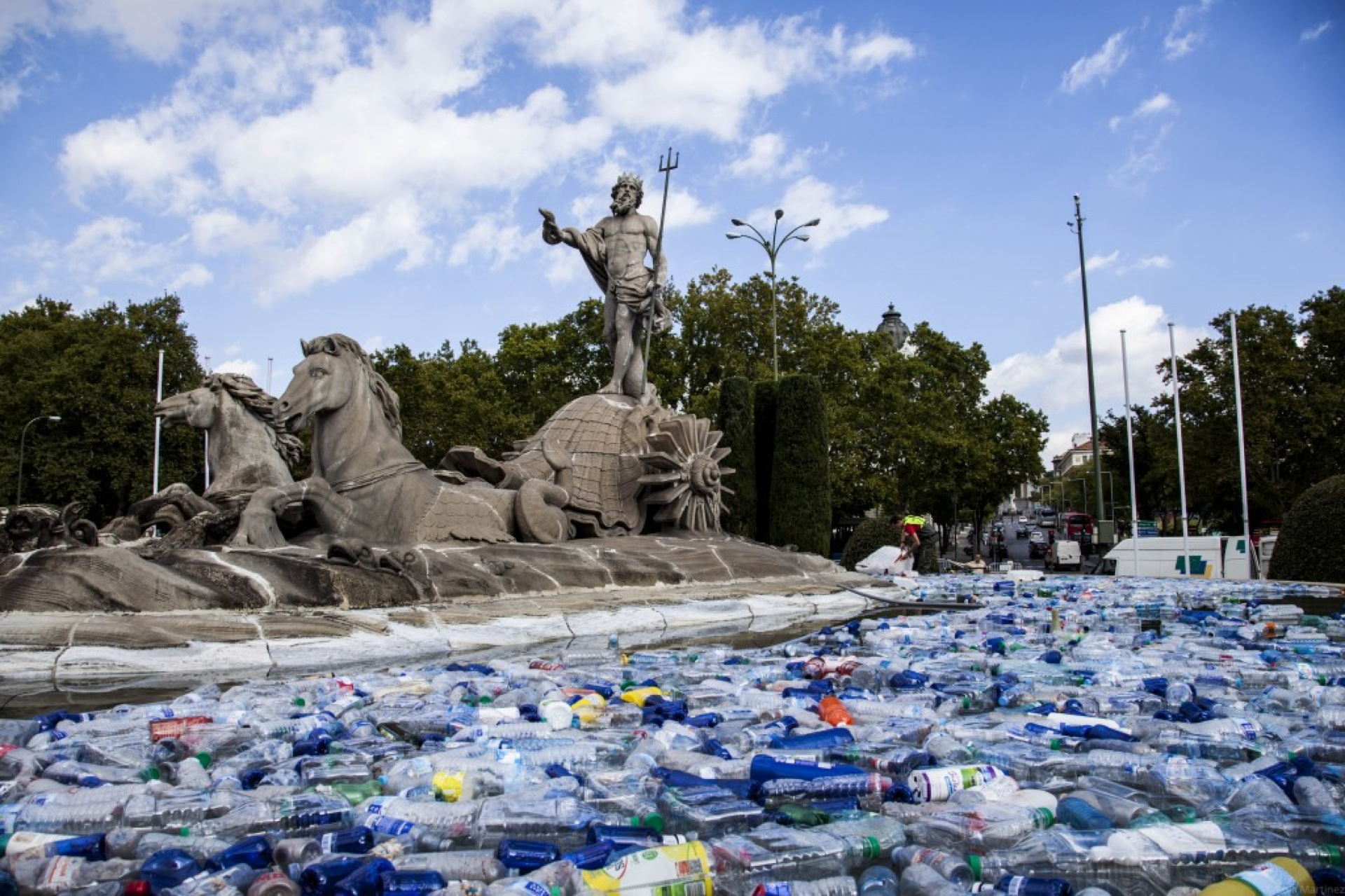 |
| "Plastic Islands," Madrid, Spain |
I read in a textbook from which I am teaching that a fountain in Madrid, Spain, has been filled with 60,000 plastic bottles as an art exhibit, “to raise awareness of the environmental impact of disposable plastics.”
A similar idea is behind the civic sculpture “Pollution,” that has graced the Kingston, Ontario waterfront since 1973. It is just two large green concrete cylinders vomiting forth a formless mass.
 |
| "Pollution," Kingston, Canada |
Either illustrates well the decadence of contemporary art.
The point of art is to reveal beauty, one of the three transcendental values, along with truth and good. Without beauty, it has no point, and is not art. It is just stuff.
“Beauty” here does not mean mere prettiness. That would just be kitsch. Beauty is something more profound and honest than that, including the sublime. Shakespeare’s “MacBeth” is not pretty; Colville’s “Horse and Train” is not pretty. They are troubling. But to just display ugliness, to make the point that it is ugly, is the opposite of art. It is just what it calls itself, visual pollution. If you like art, you must oppose it. And, if you oppose pollution, you also must oppose it.
Neither sculpture serving any possible educational purpose either—not that it is the business of art to educate. Didactic art is tiresome and plodding. It is likely that every single person who has walked by that sculpture on Kingston’s waterfront over the past fifty years already knew that pollution was unsightly. It is pretty much what the word “pollution” means. The sculpture taught them nothing. Most who stroll past the installation in Madrid probably have previously seen empty disposable plastic bottles. There is a good chance they are already against leaving them in public fountains. If they were not, there is no reason to suppose that leaving them in public fountains some more will change their minds.
Once, a group of Queen’s students painted the two cylinders of “Pollution” to look like a can of Coke and a can of 7-Up. This was derivative—of Warhol—but a vast improvement. But it counted as “vandalism.”
Angry mobs have demanded the removal of a statue of Sir John A. Macdonald, Canada’s founder, nearby; yet there is not call to remove this eyesore.
Our society has gone mad.
_(2).jpg) |
| Statue of Sir John A. Macdonald, Kinston, Ontario--since removed. |













No comments:
Post a Comment